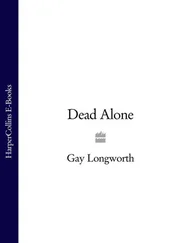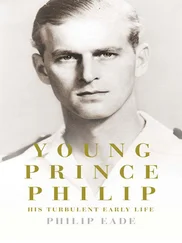had been demobbed in the crudest, simplest fashion; their commanders had said to them: ‘You have finished fighting the war, now go home’; and home they went, on foot. Now anyone with any idea of the size, the distance along parallels within the Soviet Union, will realize what sort of a repatriation this was. There were squads on foot, some even barefoot, carrying their boots over their shoulders so as not to wear them out. Others had found the most incredible means of transport, clambering up onto lorries, onto Berlin buses towed along like trains. We saw one motor unit towing two or three Berlin city buses still with the Berlin signs as they travelled east, homeward with still another thousand, two thousand, three thousand kilometres to go, perhaps into the heart of Siberia; and they sang [the popular song] ‘Kalinka Kala’ as they passed by in front of us, this and other songs, waving to us all, survivors and the rest. 6
But sufficient troops remained to keep order. The surviving German population received the occupiers with fear and sullenness, and many Hungarians and Romanians were hardly joyful. The newly liberated Czechs, Slovaks and Yugoslavs, by contrast — even most Poles — had greeted them with relief. Although the Ukrainian (Ruthenian) tail of Czechoslovakia was immediately annexed along with eastern Poland, these countries were compensated with territories at Germany’s expense, and at the request of President Benes over 3 million Germans and nearly half a million Hungarians were expelled from the Czech Sudetenland and Slovakia with the assistance of Soviet troops. All this added to the chaos on what remained of eastern Europe’s roads.
Yet, as UNESCO reported in 1945, some form of Soviet occupation was inevitable for the immediate future since eastern Europe was almost entirely dependent on the Soviet army for the transportation of food, medical supplies and other necessities, and in many areas for the restoration of basic services too. 7Furthermore, Britain and the United States had agreed that the new governments should be friendly to the Soviet Union and purged of Nazi influences. These factors called for Soviet troops to remain in these countries for some time. There was an air of inevitability about the Soviet takeover of eastern Europe.
The region was for the most part poorer than western Europe, and boasted little industry Its nobility belonged to another age, its clergy were largely reactionary, but the mass of peasantry and the small, alienated middle class, including those few Jews who had survived the Nazi period and other social outsiders, including intellectuals, were ready for a revolution of some kind. Soviet forces removed regimes most of which had become unpopular and there were hopes that the new order would bring a better kind of life. The situation had been foreseen even before the war. As early as 1935 a Hungarian economist and former centrist minister who had migrated to New York published an article which turned out to be prophetic. Analysing the effects of the Great Depression on Hungary and the Balkan countries, he concluded that the experience had trapped them in a hopeless economic situation which encouraged militant nationalism. The consequence, he forecast, would be war or revolution. In fact it had led to both. He had also forecast likely trends in the aftermath of the cataclysm:
After a bloody chaos mass misery may find its solution. This will come, however, not through a peaceful reform of the agricultural production on the basis of independent peasant holdings and cooperation but… in the form of the bread factories of Russia with dictatorial methods [i.e. collectivization]. This might also lead to a new political union but… [it] would not be… [a] federation of the free… countries [but] Slav unity under Russian dictatorship. 8
In short, he was suggesting that the Soviet way and Russian rule would seem the only practical way by which poor countries could avoid mass poverty and political instability. Whatever the perceptions of a shrewd political economist, the experience of fascism and the extreme clericalism of the Catholic Church in eastern Europe had given Communism broad appeal, especially to younger people. The older generation was not so attracted — except, ironically, in the most developed of all the eastern-European countries, Czechoslovakia, and there a Communist-dominated left-wing government was freely voted into office.
For two or three years after the war the priority in eastern Europe was to clear the debris and re-establish a working economy. Fascists and those who had collaborated with the Nazis were harshly dealt with, as they were, at first, in the West, though there were no general restrictions on individual freedom. But as soon as it became possible to look towards the longer term, the Soviet model seemed promising not so much for ideological reasons but because it seemed to be the most effective way of quickly rebuilding something better on the ruins of a discredited system.
The taproot of the Cold War, however, went back to the mistrust between the Powers which had increased from 1944. When Truman informed Stalin at Potsdam that the United States possessed an atomic bomb, which it was soon to drop on Japan, Stalin thanked him. But his intelligence service had already informed him of the fact some time before. America’s reticence did not inspire trust and the United States’ subsequent refusal to entertain requests for credits further undermined the close wartime relationship. Yet the Cold War could have been avoided even after Churchill’s ‘Iron Curtain’ speech of March 1946.
The curtain fell only over a year later, when the Marshall Aid programme was introduced to help Western European countries to recover from the war. Its terms had been designed to be unacceptable to the Soviet Union and its followers. We have this on the authority of George Kennan, the architect of American post-war foreign policy. 9So, when the Soviet Union and Czechoslovakia applied for Marshall Aid, and learned that as beneficiaries they would be subject to public American scrutiny on a collective basis, like all other beneficiaries, they withdrew. It was, after all, unthinkable that the Power which had done most to defeat the common enemy should be exposed to what was tantamount to public humiliation. That was what Washington had been counting on.
From that point in 1947 tendencies in Eastern Europe hardened into firm trends. The coalition governments which had been the norm there, as in most of continental Europe, were transformed into obedient satellites following policies of planned production, collectivization of farming, and obedience to Moscow’s political line. Five-year, even six-year, plans were introduced; agriculture was collectivized; the Communist Party, sometimes with a more agreeable local name, assumed authority in almost every institution; and the secret police thrust out their tentacles in all directions. With these systems in place Moscow had no fewer than three channels through which to control its new European empire: diplomatic relations, the Communist Party of the Soviet Union, to which all satellite parties were expected to defer, and the security services which shared intelligence and took their cues from NKVD headquarters. Those who fell under suspicion were purged. In time other institutions would be established to knit the region together for purposes of defence and economic co-operation, but Stalin always preferred bilateral to multinational dealing.
The fiat of the Soviet Party ran far wider than Europe, however, and in 1948, when the Chinese Communist Party took power from the Nationalists under Chiang Kai-shek, its leader, Mao Zedong, publicly accepted Stalin’s line. The new state of Israel, however, to which the Soviet Union had been the first power to extend de facto recognition and which, with Moscow’s blessing, had been supplied by Czechoslovakia with arms for its war of independence against the Arabs, disappointed Stalin’s hopes and aligned with the West (which may help to explain the subsequent purges in Czechoslovakia and the execution of its Jewish Party Secretary Rudolf Slansky). The Yugoslav Communist Party was excommunicated because its leader, Josef Tito, fell foul of Stalin by trying to form a Balkan confederation. Another purge — of Titoists, Zionists and other ‘deviants’ -was expected in the Soviet Union itself, but at the beginning of March 1953 Stalin collapsed and died.
Читать дальше





![Stephan Orth - Behind Putin's Curtain - Friendships and Misadventures Inside Russia [aka Couchsurfing in Russia]](/books/415210/stephan-orth-behind-putin-s-curtain-friendships-a-thumb.webp)





